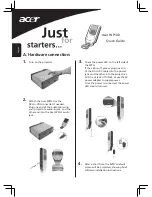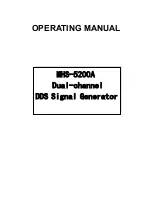
69rlq62d-f714peg4 * Memec (Headquar
ter
s) - Unique
Tec
h,
Insight,
Impact
MAR
VELL CONFIDENTIAL,
UNDER ND
A# 12101050
69rlq62d-f714peg4 * Memec (Headquar
ter
s) - Unique
Tec
h,
Insight,
Impact
MAR
VELL CONFIDENTIAL,
UNDER ND
A# 12101050
69r
lq62d-f714peg4 * Memec (Headquar
ters) - Unique
T
ech, Insight, Impact * UNDER ND
A# 12101050
MAR
VELL CONFIDENTIAL - UNA
UTHORIZED DISTRIB
UTION OR USE STRICTL
Y PR
OHIBITED
PXA300 Processor and PXA310 Processor
Vol. I: System and Timer Configuration Developers Manual
Doc. No. MV-TBD-00 Rev. A
CONFIDENTIAL
Copyright © 12/13/06 Marvell
Page 388
Document Classification: Proprietary Information
December 13, 2006
Not approved by Document Control. For review only.
Each module of the RTC controller has one or more counter registers and one or more corresponding alarm
registers. For example, the timer module has one counter register and one alarm register.
First, the preferred alarm set conditions are written to the alarm register. The corresponding alarm-enable bit in
the RTC Status register (RTSR) is then set. If a counter has a count-enable bit, the corresponding count-enable bit
must be set to enable the counter to start counting. The count-enable bits for the corresponding counter registers
reside in the RTSR. The stopwatch and periodic-interrupt modules have count-enable bits while the timer and
wristwatch modules consist of free-running counters without any count-enable bits.
Figure 13-2. Operational Flow of the RTC Modules
Has the corresponding
alarm-detect bit in the RTSR
been cleared (by writing to the
Yes
No
Yes
No
Yes
Is the counter register value equal
to the alarm register value?
(Compared at the rising edge of
the corresponding clock signal)
Is the corresponding
alarm-enable bit in the RTSR
RTC controller sends the
corresponding low-power mode
alarm to the Services Unit manager
where it mask bits control wakeups
RTC controller activates the
corresponding alarm-detect
bit in the RTSR and sends an
interrupt to the Interrupt
Controller.
No
















































